Despite some advances to the contrary, PC gaming is still the domain of the big boxy tower. But while there's no doubt that having a wall socket nearby has made for some impressively powerful graphics cards, Nvidia's having a bash at bringing over some of that PC power to the tablet domain with the Shield Tablet and the Shield Controller, the sequel to the quirky mash-up of gaming controller and LCD screen that was the Shield Portable (which remains on sale in the US). Powered by Nvidia's Tegra K1 chip--which features desktop-class graphics in the form of a Kepler-based GPU--the Shield Tablet may well be an early glimpse at the future of gaming; the idea of having just one device to idea surf, and email, and work, and game whether at home or on the go is certainly an enticing one. But, as neat as that concept is, and despite some successes, the tech isn't quite there to pull it off just yet.
Apex Legends: Urban Assault Collection Event Trailer Stellar Blade - BIBI ‘Eve’ Official Music Video Trailer | PS5 Total War: WARHAMMER III - Elspeth von Draken Gameplay Showcase Genshin Impact - "Arlecchino: Sleep in Peace" | Official Character Teaser Potionomics: Masterwork Edition - Official Announcement Trailer Snowbreak: Containment Zone - "Gradient of Souls" Version Trailer Kingdom Come: Deliverance 2 - Official Cinematic Announcement Trailer Harold Halibut GameSpot Video Review Nancy Drew: Mystery of the Seven Keys | World Premiere Official Trailer Modern Warfare III & Warzone - Official Cheech & Chong Bundle Gameplay Trailer SteamWorld Heist II – Official Reveal Gameplay Trailer Dead Island 2 – Official SoLA Expansion Gameplay Launch Trailer
Please enter your date of birth to view this video
By clicking 'enter', you agree to GameSpot's
Terms of Use and Privacy Policy
Specs
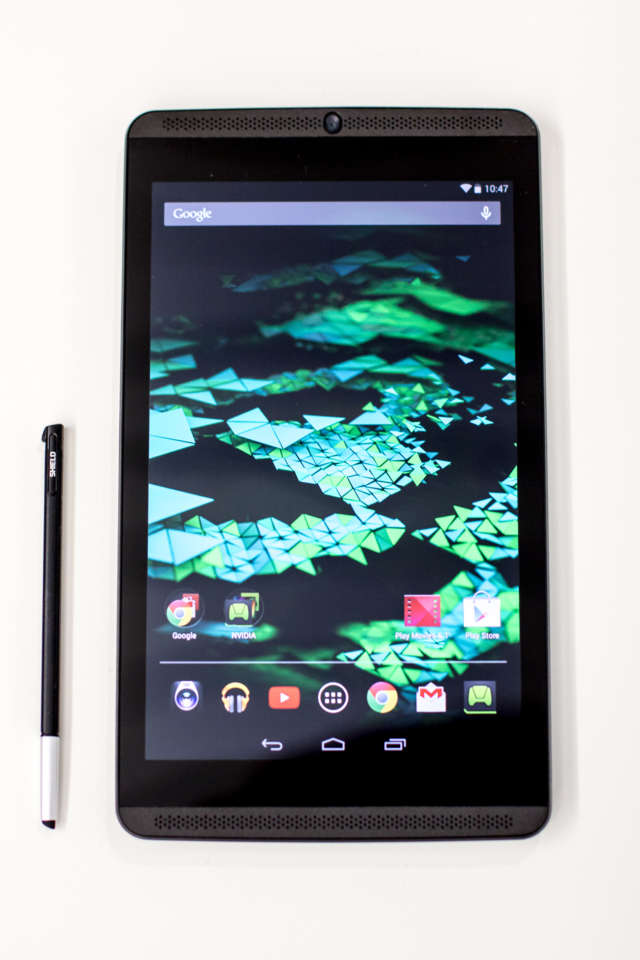
On paper at least, the tech is impressive. Shield Tablet is based on Nvidia's 32-bit Tegra K1 chip, which features a Kepler-based GPU with 192 CUDA cores that supports OpenGL 4.4 and the DX12 API. In theory, this means PC developers should find it easier to port their games over to Android, with Epic having already unveiled a version of Unreal Engine 4 running on the chip. On the CPU side, a quad core Arm Cortex A15 processor clocked at 2.2GHz powers the Shield Tablet. That's actually the same quad core processor as used in the original Shield Portable, albeit at a higher clock speed. While the A15 is a powerful chip, it's slightly disappointing not to see something more modern here. Nvidia has already talked about the flagship 64-bit version of Tegra K1, which features the company's Project Denver CPU, a powerful chip first based on 64-bit ARMv8-A architecture.
The K1 is backed up by 2GB of RAM, which makes for zippy performance across the board; the Shield Tablet churns through pretty much any task you throw at it, which makes navigating through the largely stock version of Android 4.4.3 it ships with a pleasure. There's 16GB of internal storage, the much-appreciated inclusion of a Micro SD slot for up to 128GB of storage expansion, a 5MP front-facing camera as well as a 5MP autofocus rear camera, a non-active stylus based on Nvidia's DirectStylus 2 technology, front-facing stereo speakers, a 19.75 Watt hour battery, mini HDMI out, and an 8-inch, 1920x1200 pixel display.
Some might be disappointed not to see a higher DPI display here--such as the one featured on the iPad Mini--but the Shield Tablet's IPS display is lovely and clear, and has great viewing angles. You might run into some visibility issues if you're using the tablet outdoors in blazing sunlight, but otherwise the display is plenty bright. The lower DPI count is also better for running games, the more taxing of which stress the GPU at 1920x1200, never mind anything higher.
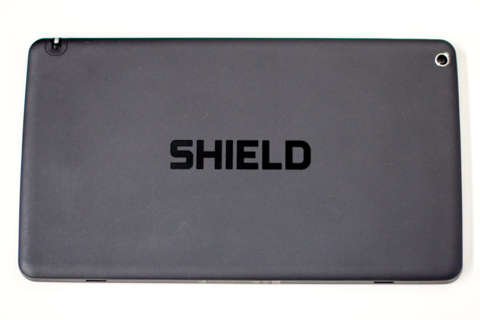
The display also makes a lot more sense when you see the price: at just $299/£229 for a 16GB Wifi version, or $399/£299 for a 32GB version with 4G, the Shield Tablet is definitely at the cheaper end of performance tablets, and it compares favourably with the likes of the Nexus 7, particularly because it's running a mostly stock version of Android. I'd happily pay the extra few bucks for the Shield Tablet; it's simply a better, more well-specced device.
I wouldn't say the same about the Shield Controller, though. While you can use any Bluetooth controller you like with the Shield Tablet, a lot of its features are built with the Shield Controller in mind. Unfortunately, it's an $59/£49 on top of the tablet asking price, and when you add in the cost of the kickstand case at $39--which is basically a necessity if you plan on gaming with the controller on the go--you're looking at almost an extra $100 on top of the tablet price to get the full Shield Tablet experience. Sadly, Nvidia isn't offering any bundles, which is a missed opportunity to get people into the tablet-gaming fold.
The Shield Controller features the usual array of analogue sticks and buttons that you'd find on an Xbox or PlayStation controller, as well as some Android-specific buttons, including home, back, and volume, as well as a small touch pad at the bottom of the pad for controlling a mouse cursor. There's a headphone jack up top for streaming game audio, or adding a headset for voice chat, and up to four controllers can be paired with the Shield Tablet. On the whole, the controller works well, with its proprietary WiFi connection remaining stable throughout. Nvidia claims the WiFi connection results in 2X less latency than Bluetooth, and while I can't definitively say that's the case, I certainly didn't notice any lag while playing games.
Design
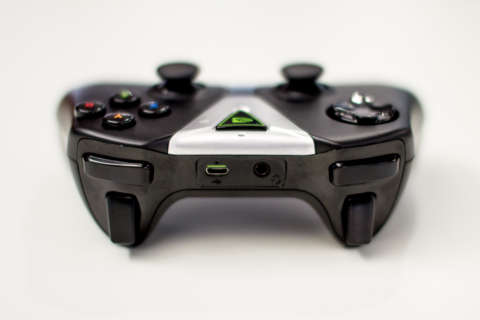
The problem with the Shield Controller is that it looks cheap, like one of those flimsy third-party Datel controllers you used to get laden with at birthdays from a well-meaning Aunt. There's nothing about it that screams premium gaming controller in the same way that a PlayStation 4 or Xbox One controller does, and considering it's the same price as those controllers, that's disappointing. The plastic feels cheap, the D pad and shoulder buttons are mushy under the fingers and thumbs, and the controller is on the large side, so those with smaller hands might find it a little uncomfortable to hold. I also found the touch-sensitive Android buttons to be a bit too sensitive, and I often found myself accidentally activating the back button while playing a game. As you can image, that got irritating rather quickly.
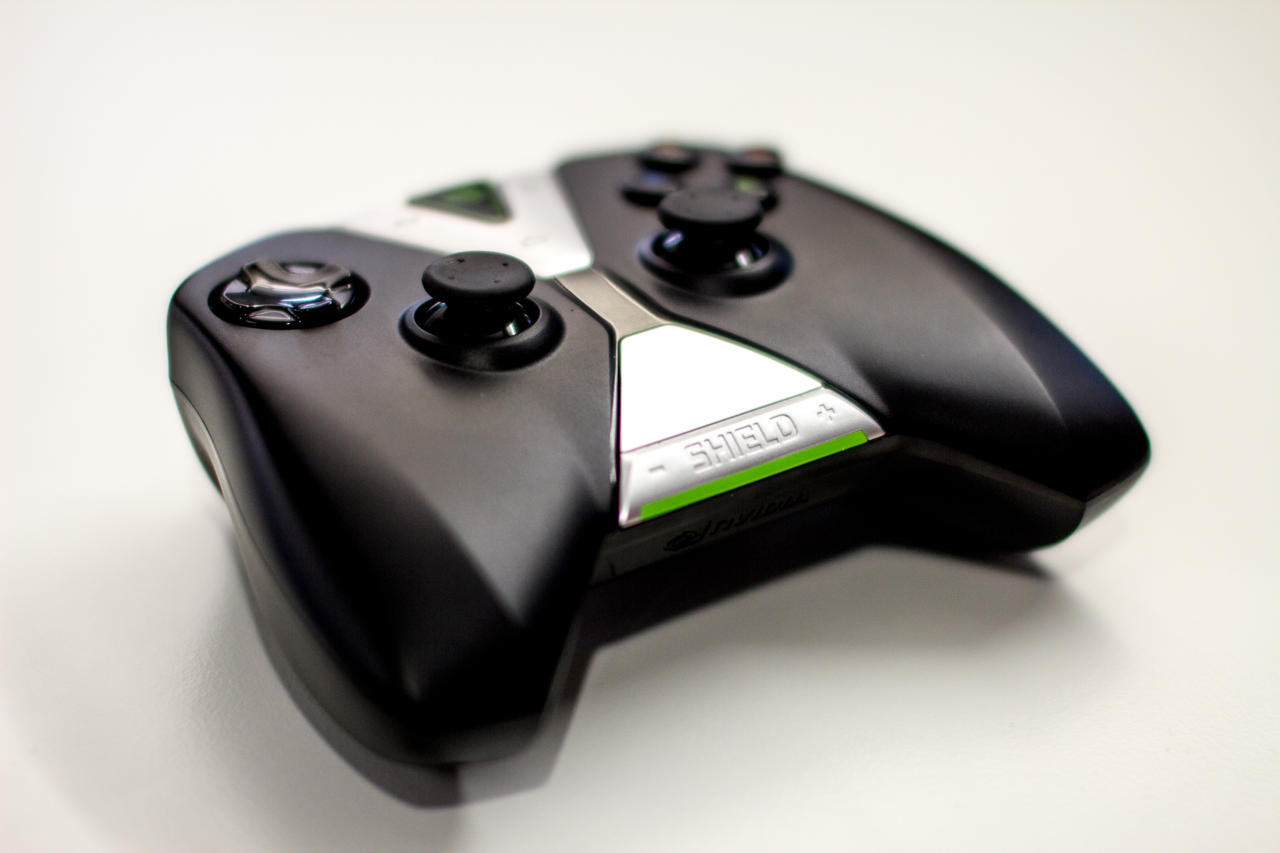
I'm a much bigger fan of the design of the Shield Tablet itself. It might be a little bit thicker than some tablets at 9.2mm, but it feels solidly built, with a reassuring plastic construction and 390g weight that's not too heavy for one-handed use. It's an understated design, with a plain, matte black finish and a sole bit of branding coming from the embossed Shield logo on the back. The only bit of bling comes from the plastic chamfered edges around the display, which look great alongside the otherwise less ostentatious touches. The headphone jack, micro USB, and mini HDMI ports are neatly positioned at the top of the device, while the power, volume, micro SD slot, and stylus slot are easily accessible along the left side. My only real gripe with the design of the Shield Tablet is the thickness of the bezels around the screen, which are a tad wide by today's standards.
That's a small trade-off for what is a great tablet for the price. Indeed, even if you ignore any of the Shield Tablet's gaming-specific features like Twitch.tv streaming, or Gamestream for streaming PC games to your tablet, I'd throughly recommend the Shield Tablet as a great, everyday device. The gaming features are simply a nice bonus, which is good, because they don't always work exactly as advertised.
Performance
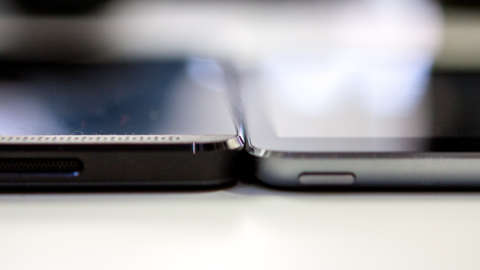
But let's start with the good stuff. With the Tegra K1 chip on board, the Shield Tablet flies through Android. Apps load quickly, scrolling is buttery smooth, and video streaming with the likes of Netflix is stutter-free. 3D games like Modern Combat 5 and Real Racing 3 run smoothly too, whether plugged in to a TV or displayed on the tablet's screen. Plugging in via HDMI gives you the option of launching console mode, which shuts off the tablet screen, closes all running apps, and brings up a simple, to-the-point interface that lets you load up apps and games or purchase them. Nvidia's storefront sorts out apps via controller compatibility, which is extremely handy, but you can purchase stuff straight through the Google Play store if you prefer.
There aren't a whole lot of K1-optimised games available for the Shield Tablet at launch. So far, there are just 11, including The Talos Principle, Half Life 2, and free-to-play shooter War Thunder, which comes complete with cross-platform online play. To get you started, the tablet comes with a free copy of Trine 2, which is a nice touch. I tried both Half Life 2 and Trine 2, and found both games looked great, but didn't run without problems. Half Life 2 in particular had lots of noticeable frame rate issues during busier scenes, and while it didn't ever get to the point where the game was unplayable, it was slightly disheartening to see a Tegra K1 device struggle with a 10-year-old game.
That said, I happily sat on my couch and wiled away the hours playing through Valve's masterpiece, quickly forgetting that I was doing it from a tablet. Despite the issues, the fact that a game of Half Life 2's scope plays natively on a device that you can carry around with you is impressive; it's just not quite at the Xbox 360/PlayStation 3 levels of performance that Nvidia boasted earlier this year.
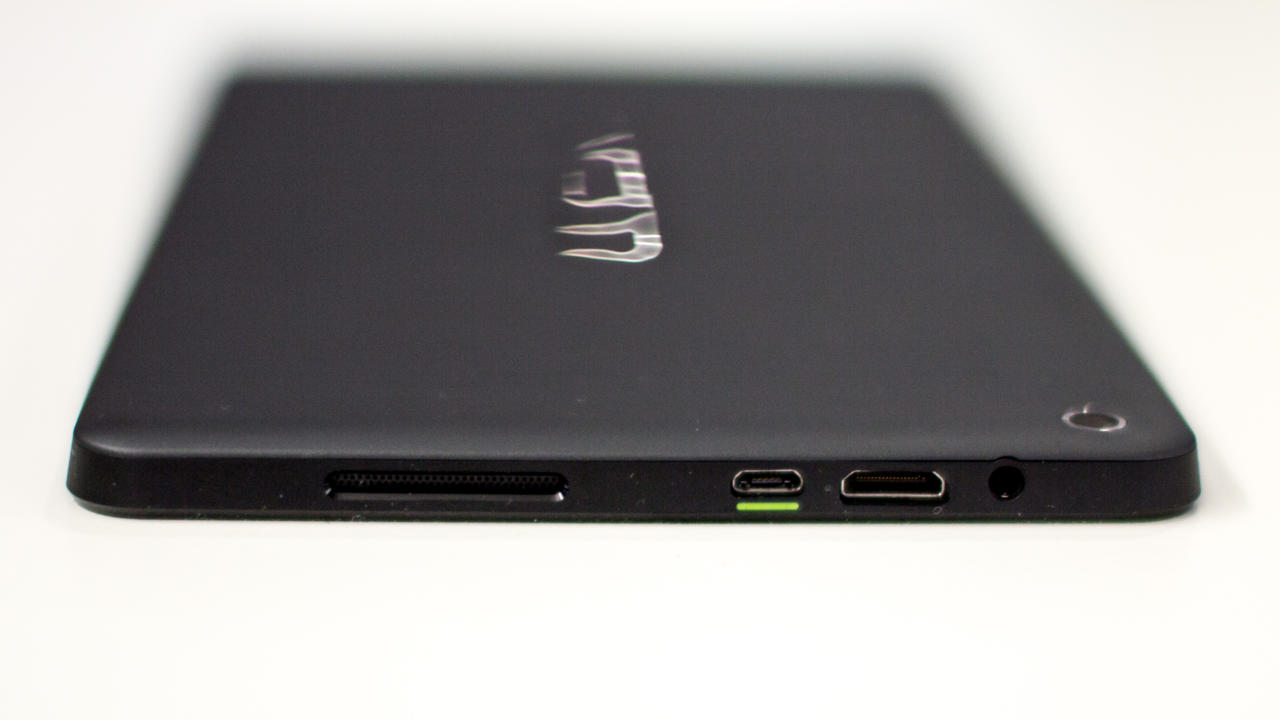
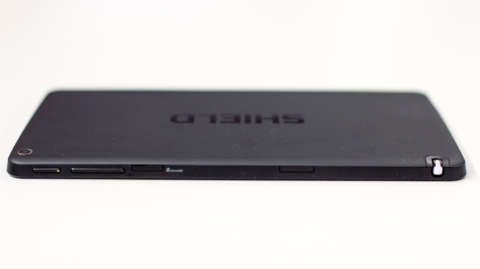
Like the Shield Portable, the Shield Tablet supports Nvidia Gamestream, which lets you stream a selection of PC games from your PC straight to your tablet via WiFi, or even LTE. The only proviso is that your PC needs to be running an Nvidia GPU, and it has to be at least a GTX 650 in order for it to work. Laptops require something from the GTX 800M, 700M, or Kepler-based GTX 600M-series of GPUs. Nvidia says it hasn't made any large improvements to the existing Gamestream tech, so if you've tried Gamestream before with a Shield Portable, the experience is largely the same with the Shield Tablet: that's to say, if you've got a good wireless connection, it works well.
Over WiFi you get 720p streaming, and with a good, clear wireless signal, games look great. Obviously, the more powerful your PC, the better your games will look, but with the resolution capped at 720p over WiFi, you can afford to crank a few more settings than you would at 1080p. While there's no mistaking streamed games for native games thanks to a few light video compression artefacts, I happily played through the likes of Bioshock Infinite without issue. However, if you've got poor WiFi reception, or you're playing over the internet, then the quality and responsiveness of streamed games takes a hit. It's particularly noticeable in driving games, where the lag can make games like Grid 2 almost unplayable. Shooters like Bioshock Infinite fare much better, though. Basically, if you've got a poor connection, stay away from any twitch-based games.
Over ethernet, the Shield Tablet supports 1080p streaming, although, good luck trying to find a compatible ethernet adaptor. Nvidia doesn't sell one itself, and its knowledgebase for the original Shield simply states that "it may be possible to use a third party micro-USB to Ethernet adaptor," rather than actually suggesting which one to buy. So, you're left hunting through forums, and while some users have reported good compatibility with certain adaptors, it doesn't seem like there's a definitive choice. Clearly, if a feature is going to be advertised, it should be easy for customers to use it, and not have to go through a process of trial and error and Google searches to get there.
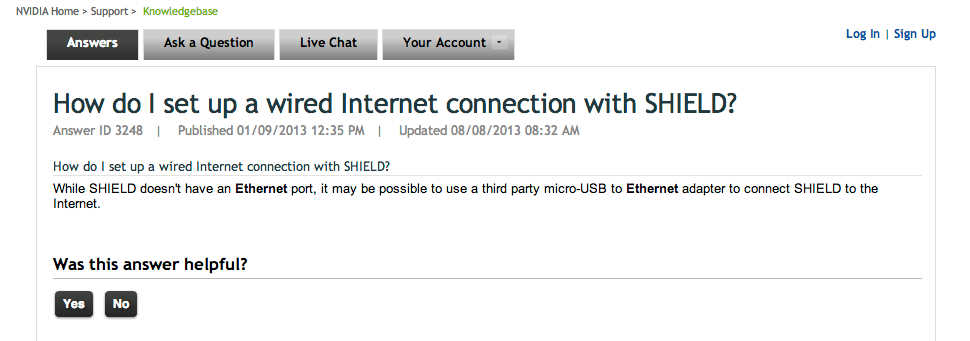
Twitch streaming is also a bit hit or miss. Activating the feature is as simple as holding down the back button on the controller and selecting broadcast. You can stream the Android interface or any game or app you like, bar those with protected content like Netflix. You can also add in audio from the built-in microphone, or from a headset plugged into the controller, as well as activate picture-in-picture with the front facing camera. Twitch streaming worked without a hitch with smaller Android games and Gamestream. However, when running more intensive Android-native games like Half Life 2 and Trine 2, I encountered a few issues.
Twitch streaming worked without a hitch with smaller Android games and Gamestream. However, when running more intensive Android-native games like Half Life 2 and Trine 2, I encountered a few issues.
Most notable was the performance hit, which caused the frame rate to drop dramatically in both games. Things got worse in Half Life 2, where the game actually crashed consistently at a certain point while streaming, and only by reloading the game, playing past that point, and then reactivating Twitch could we get past it. Perhaps an update or two will fix this in the future, but for now, graphics intensive games and Twitch streaming on the Shield Tablet aren't the best of friends.
Neither, it must be said, are graphics intensive games friendly with the battery. Nvidia claims around 10 hours of battery life when playing back videos, and certainly, with everyday use I could get through a few days without needing to give the tablet a charge. That changed significantly when playing games, though. The more intensive the game, the more the battery life dropped. Certainly, with the likes of Half Life 2, I only managed to squeeze less than four hours out of the battery before it gave up the ghost.
That's not uncommon for tablets, though, and generally, the battery life is in the same ballpark as other tablets in this price range. One other thing to note about playing graphically intensive games is the heat generated by the tablet. Again, it's not uncommon for tablets to get hot while running 3D games, but the Shield Tablet got very toasty after an hour or so of gameplay. It's fine if you've got the thing propped up on a table, or next to your TV, but I certainly wouldn't want to be holding it for too long for those types of games.
Verdict
Given that Twitch streaming is one of the key selling points of the Shield Tablet, it's disappointing that it doesn't work consistently across the device. Its small line up of games doesn't help matters either, particularly as there are frame rate issues with the more graphically intensive titles. Certainly, you're not going to be swapping your Vita or 3DS for a Shield Tablet anytime soon.

However, I like to think of the Shield Tablet this way: if you buy one, you're getting a great looking, powerful Android tablet with a near stock version of the OS for an enticing price; its gaming features are simply a nice bonus. PC players with a large library of games will also get a lot out of the tablet's Gamestream functionality, which--despite its issues over slower connections--is a great way to access your games away from your main machine.
Despite Nvidia's claims, I wouldn't get a Shield Tablet for its gaming features alone. Indeed, if you're buying it solely for the gaming features, then you might be a little disappointed. But, if you're interested in what the future of gaming might look like, Shield Tablet is perhaps the best glimpse we've had of it so far. If Nvidia can push the power of its mobile chips every year as much as it does its desktop ones, and if broadband keeps up, within a few years, something like the Shield Tablet may very well be the best way to game.
